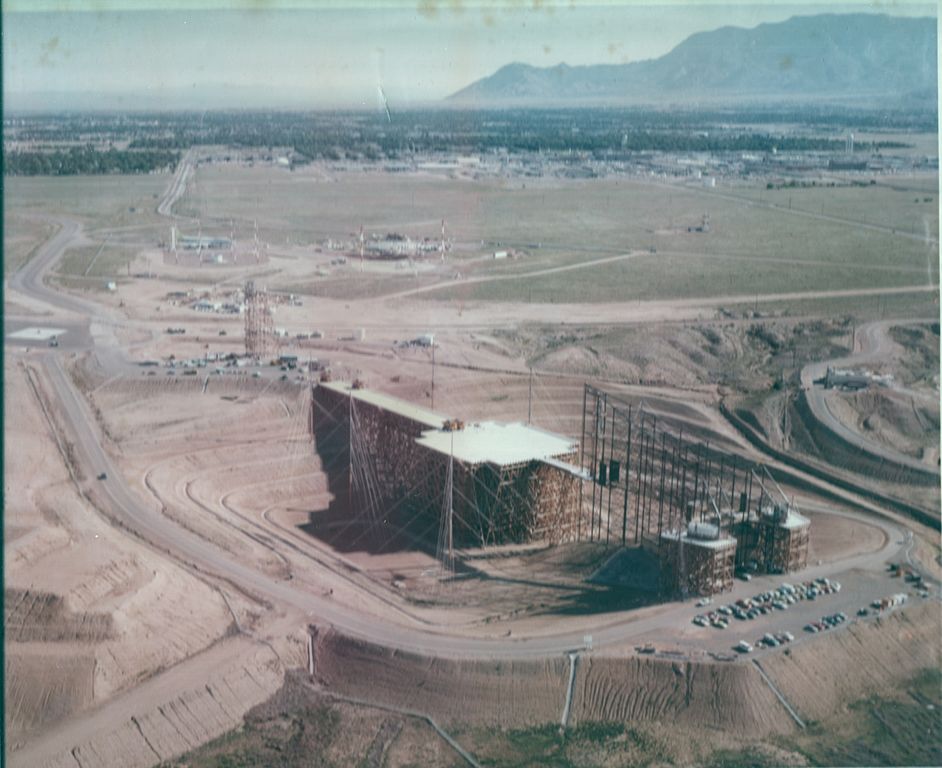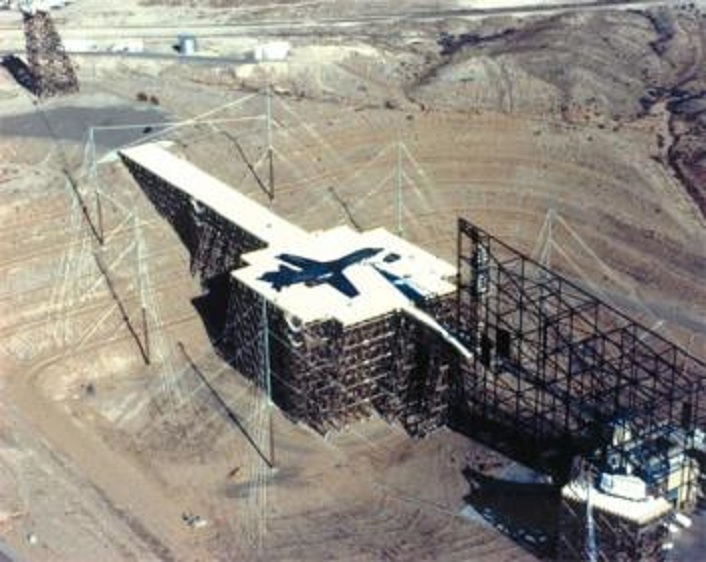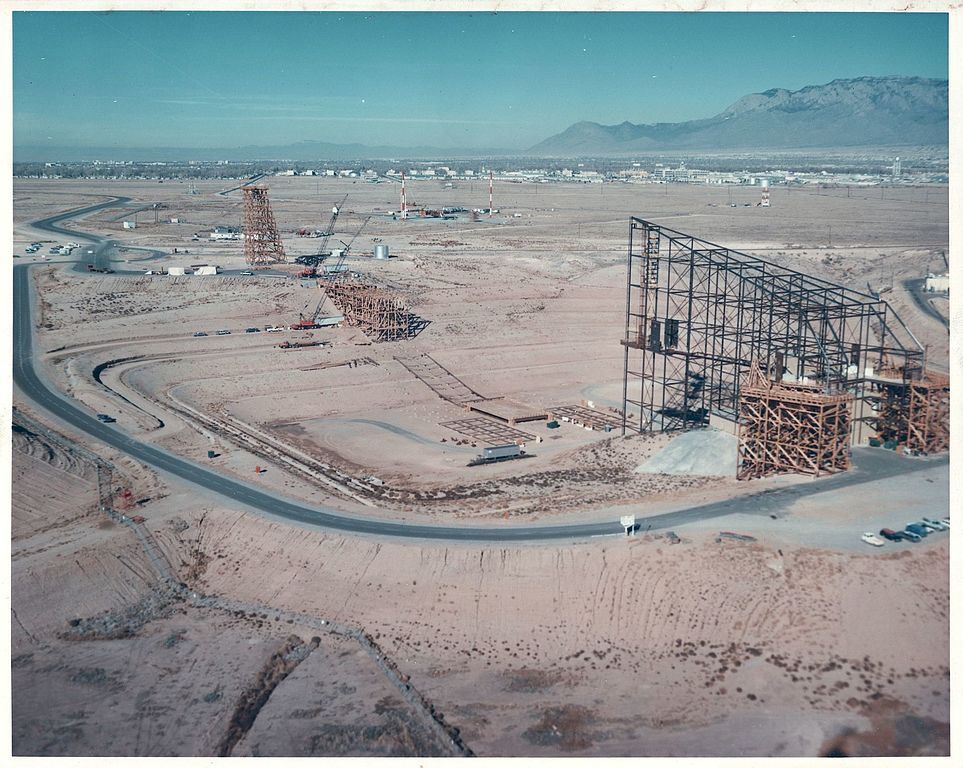The ATLAS-I program’s objective was to examine how harmful electromagnetic pulses would affect SAC aircraft
Sandia National Laboratories created their own testing facility for the newest developments in weapon design in response to the feared threat of a nuclear attack on American territory during the 1940s when developments in the field of atomic weapons helped establish the foundations for the Cold War. Scientists in this area were more focused on creating technologies that wouldn’t be impacted by a different component of a nuclear explosion than on the problem of radioactive fallout.
In order to test this kind of technology, a top-secret testing facility, code-named Trestle, was established adjacent to Kirtland Air Force Base (AFB), in the southeast of the city of Albuquerque in New Mexico, according to the article ATLAS-I – Top secret EMP testing site that published on Abandoned Spaces. The facility’s full name, Air Force Weapons Lab Transmission-Line Aircraft Simulator (ATLAS-I), is fairly lengthy but clearly states what it is used for.

ATLAS-I was a matchless testing contraption for the effects of electromagnetic pulses (EMPs) on damaging radiation. The world’s most sophisticated non-nuclear electromagnetic pulse generator was created in the 1970s. It is believed that a certain amount of high-energy electromagnetic and particle radiation is present when traveling through space, at great altitudes, and in the vicinity of nuclear reactors and particle accelerators. Additionally, and critically during the Cold War, these sorts of EMPs are produced by nuclear explosions.
Electronic components must be “radiation-hardened” to prevent malfunctions due to the amount of radiation they are exposed to. This may be accomplished by the use of non-standard electronic chips made of insulating materials during the manufacturing process, physical shielding of electronic components, and software development. The purpose of ATLAS-I was to evaluate the radiation tolerance of various component designs and materials.
The $60 million facility was made up of two components: a massive wooden trestle built in a bowl-shaped arroyo to elevate the test aircraft above ground interference and position it below the pulse similarly to how it would be seen in mid-air; and a pair of potent Marx generators that could simulate the electromagnetic pulse effects of a high-altitude nuclear explosion (HANE) of the type expected during a nuclear war.
The Trestle is the largest wood and glue laminate structure in the world.
Trestle’s main wooden structure was 1,000 feet long, 125 feet (about 12 stories) tall, and made of 6.5 million board feet of lumber, which was enough to support a fully loaded B-52 (at the time the biggest and heaviest strategic bomber in the US inventory) while also reducing any chance of interference from the ground or the structure itself, creating an accurate representation of airborne conditions.
The timbers were made from a combination of Southern Yellow Pine and Douglas Fir since they both showed outstanding EMP transparency, with the latter having the best weather resistance and the former having the best tensile strength. Large amounts of ferrous material in the building would have a negative impact on measurements from the EMP tests, but this could be avoided by employing an all-glued laminated timber framework with woodworking joints to mate the enormous timbers.
A small amount of metal was employed in the building process because the severely loaded joints included a steel sheer ring that encircled the wooden bolt that clamped the joint. Fiberglass was used to build everything from the vast fire suppression piping to the fire escape along one side of the trestle.
Strategic Air Command (SAC) bombers were the main target of the tests due to their higher flight altitude and nuclear payload, although fighters, transport aircraft, and even missiles were also tested for EMP hardness on Trestle. Numerous sensors positioned inside, below, and to the sides of the aircraft would collect additional information on the airframe’s EMP permeability to be used in design considerations for future Cold War aircraft and to identify areas that needed more EM hardening, in addition to conducting electronics survivability tests.

The ATLAS-I program was terminated in 1991, ending the damaging EMP testing of airplanes and replacing it with significantly less expensive computer simulations as technology advanced. It continues to be the largest metal-free wood laminate construction in the world and all of the wooden trestle structures are still intact today. However, since the automated fire sprinkler system was turned off in 1991 and the creosote-soaked wood dried up significantly in the desert climate, the trestle has significantly increased the risk of a fire. Although attempts are hampered by the structure’s location on the top-secret Sandia/Kirtland site, efforts are underway to secure the funding required to have the monument protected as a national historic landmark.
Around a mile to the southeast of Runway 26’s threshold, the trestle structure is still clearly visible from commercial aircraft making landing and takeoff at Albuquerque International Sunport.

Photo by U.S. Air Force


